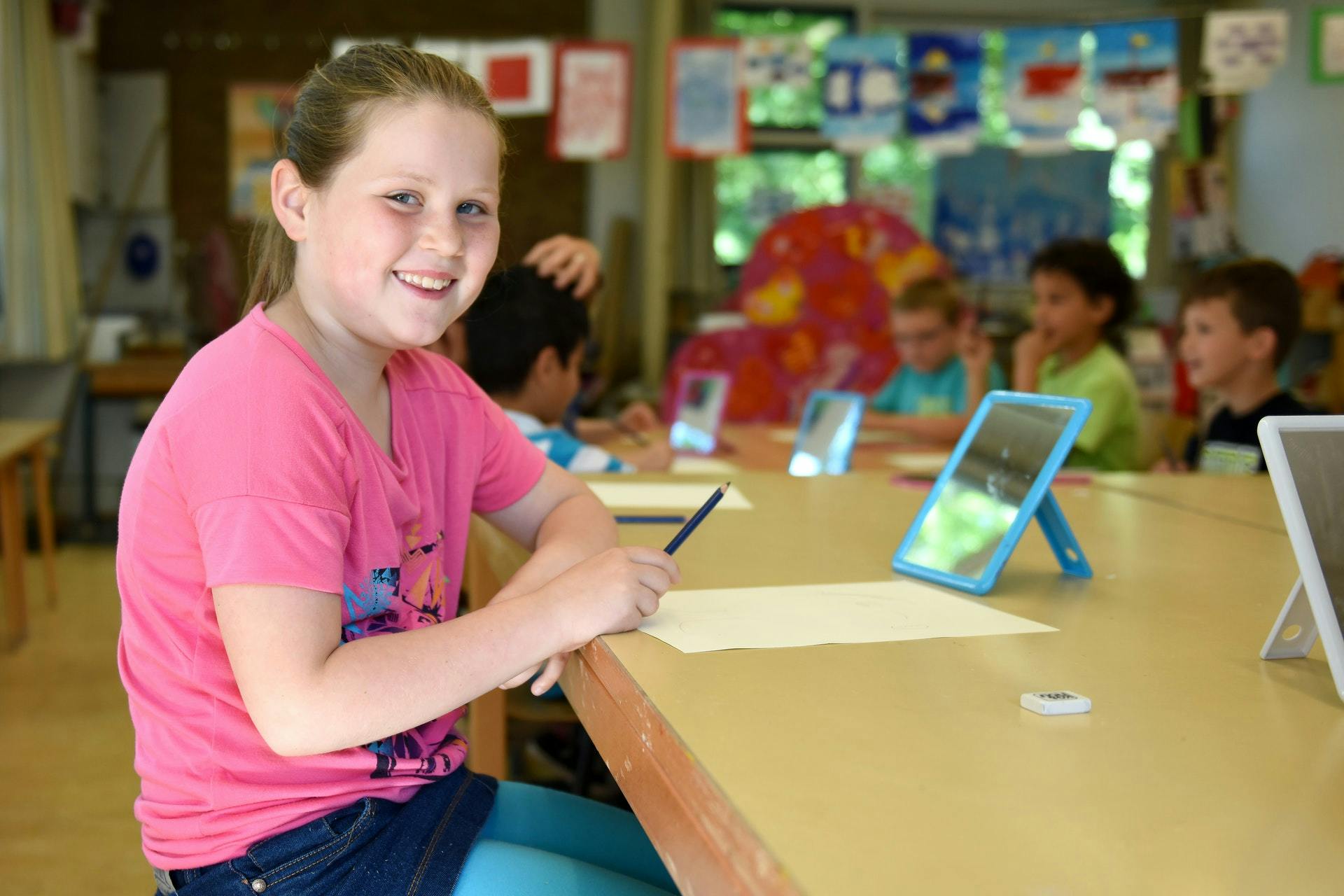

A good educator makes a difference in how students learn and how they feel about their learning.
When you teach elementary math, you have a tremendous opportunity to not only teach your students foundational concepts they’ll use throughout their schooling, but to instill a love of math from a young age.
Keep reading for the best ways to create effective and engaging math lessons in your elementary classroom!

Your students probably have varying levels of interest and ability when it comes to math class. In order to meet their different needs, you need to be flexible and understand how they learn best.
Use these activities to help your young students develop problem-solving skills, understand abstract concepts and encourage math talk in your classroom.
Put down the worksheets and step away from the chalkboard — these hands-on teaching methods are designed to make sure every student is actively participating in your lesson!
Some of our favorite kinesthetic activities include:
No matter what you’re teaching, there’s a hands-on learning activity for it. Try incorporating base ten blocks, LEGO or even playdough to help students understand abstract mathematical concepts and develop number sense.
For some students, seeing is believing. Visual representations of new ideas can help them develop deep understanding and even use a different part of their brain!
Anchor charts around the classroom can help students understand the basics of a new unit, while word walls can help build vocabulary skills.
Practice different ways of showing numbers with a ten frame, pictures, or number lines. Explain concepts like multiplication and long division with buttons, blocks or other small items.
Every kid loves to play, so harness that power with math games! Classroom games are a great way to engage students and give them an active learning experience.
Some of our favorite math games include:
For more classroom fun, incorporate digital game-based learning tools like Prodigy Math into your classroom. Inspired by the video games and fantasy adventures your students already love, Prodigy turns your math class into an adventure filled with epic quests, exciting rewards and more ways to love learning math.
Plus, your free teacher account gives you access to tools that help you:
Are we ever going to use this in real life?
Introduce students to all the ways math is applicable to real life with:
Websites like Get the Math also give students more ways to see math in action and experiment for themselves.

When students have a chance to explain the why behind their solution, they’re thinking critically. Instead of just plugging in a formula or answering with a few words, encourage students to think deeper about math problems and understand the theory behind them.
Use number talks in your classroom to help students solve problems and explain how they did it. Record different strategies and show students there’s more than one way to reach the answer!
Math journaling can also give students space to write down how they solved word problems. They’ll be able to ask you questions and define relevant vocabulary for all-around understanding!
Student learning is a journey, and you’re the guide.
As students learn and grow, feedback on what they’re doing right and where they can improve is critical for helping them develop a growth mindset.
Aside from traditional parent-teacher conferences, classroom direction and feedback can come through:

Mastering multiplication or successfully tackling time-telling is a big deal for kids — so why not take the chance to celebrate a little?
At the end of a big test, unit or project, take a moment to celebrate everything students achieved. Give space for students to share their final products with the class.
Student-led celebrations can help you incorporate math and other skills into your celebration, too! Have students decide on a theme, budget (if any), decorations and volunteers to add a little extra learning to the fun.
Want to celebrate student achievement in a fun, engaging way? Here’s how to use Prodigy for engagement and rewards.
Personalized learning tailors lessons to every student’s unique needs and abilities. It gives students control over their own learning and can help differentiate what students practice.
A Middletown, NY school district implemented a personalized learning program that asked students to help set their own goals around the classroom. The school district saw a 67% increase in math achievement over four years.
Some common personalized learning strategies include:
Above all, allow students to have a say in their own learning experience and give them multiple opportunities to demonstrate their knowledge.

When students work together, they also learn from each other. There are lots of strategies to help make teamwork in your classroom easy, including:
Be sure to model open-minded and respectful listening skills, and encourage all students to participate fully.
In math class, concepts don’t exist independently of each other — they tend to stack up. Mastery learning can help each student to build on previous knowledge and set them up for long-term success.
Did you know that the average student in a mastery learning classroom achieves the same level as the top 15% of students in a classroom not using mastery learning? 90% of mastery learning studies have seen positive results, showing that students can achieve more when they learn at their own pace.
Use pre-teaching for maximum impact and effectiveness, or cover relevant background knowledge as it comes up. When students are equipped with everything they need to know, they’re more likely to have a positive attitude towards math!

As an elementary teacher, you want all your students to succeed and build a positive attitude towards math.
While every student is different, here are some ways you can foster math confidence and student achievement in your classroom:
Verbal, auditory, kinesthetic, social — every student is unique and learns in a different way. Whether it’s the materials you use or the study strategies you teach students, be sure to find teaching strategies that address different learning styles.
To understand how students learn best, send out a quick survey, ask parents during parent-teacher conferences or do some classroom observation. A mix of individual, paired and group work can also help every student succeed in their own way.
It’s easy for students to get caught up in memorizing facts and learning formulas. And that’s important! But as students learn, make sure to explain the why behind math operations, not just the what.
Build in-class time for talking through problems, and seek out ways to apply what you’re teaching to everyday life.
Like all of us, students sometimes need a little motivation to keep going when things are hard. Encourage students to try their best with rewards like:
Small rewards can help students stay focused and on task. Plus, they’re a great way to keep the math classroom fun!
Once you’ve encouraged students to try their best, don’t forget to celebrate their achievements.
Rewards for good behavior or exceptional achievement keep students motivated to learn. Recognize their hard work and:
Not everything you try is going to work right away. Maybe students don’t take to a certain math instruction technique or prefer to show their math skills in a different way.
Challenge yourself to take an honest look at your teaching strategies and whether or not they’re working. If you’re stuck, ask a trusted colleague for feedback.
It’s no secret that elementary math curriculums often aren’t as effective as possible. As a teacher, you’re sometimes left to your own devices when it comes to helping students understand mathematical ideas like addition, subtraction, multiplication, division or decimals for the first time.
Common Core and other state standards attempt to correct for a surface-level understanding of math concepts, but they’re not always successful. As a teacher, the best way to ensure long-term success is to promote conceptual understanding as much as content knowledge and use a mixture of techniques in your instruction.

There are lots of resources and techniques to help you make math fun for every student, no matter how they feel about math class.
As you teach, keep trying new strategies and ways for students to learn. Adjust as necessary, model a positive attitude and soon you’ll start to see what your students can accomplish!
Prodigy Math is an adaptive, game-based learning platform that turns math practice into an epic adventure. Students explore new worlds, complete quests and play with friends — all while answering standards-aligned math questions. As they play, use your free teacher tools to send Assessments and differentiate content for every learner.